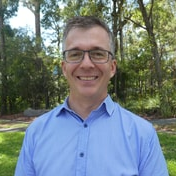Transplantation of Glial Cells to Repair Injuries and Diseases of the Nervous System
A special issue of Neuroglia (ISSN 2571-6980).
Deadline for manuscript submissions: closed (31 May 2022) | Viewed by 3867
Special Issue Editors
Interests: olfactory ensheathing cells; schwann cells; spinal cord injury; peripheral nerve injury; cell transplantation; 3D bioprinting; neurodegenerative disease; growth factor
Special Issues, Collections and Topics in MDPI journals
Special Issue Information
Dear Colleagues,
The transplantation of glial cells to repair injuries and diseases of the nervous system is a growing field, and many promising outcomes have been demonstrated in various injury models. For example, various types of glial cells have been tested in pre-clinical and clinical trials to repair spinal cord injury, peripheral nerve injury including optic nerve and brachial plexus injuries, and brain injury, and to treat demyelinating diseases and neurodegeneration.
Regardless of the injury model or cell transplantation type, some of the difficulties in optimising glial cell transplantation include the purification of glial cells, the timing of transplantation, the cell preparation and supporting scaffolds, the surgical approach of transplantation, the survival of the transplanted cells, and the various assessments of regeneration.
This Special Issue seeks original research articles and reviews that address the latest approaches used for glial cell transplantation. Topics can include, but are not limited to, glial cell transplantation that involves new cell-preparation technologies; methods to improve cell survival after transplantation; timing and method of transplantation; and motor, sensory and autonomic tests to determine functional outcomes. By gathering these submissions into one Special Issue, we aim to promote new ideas that can be adopted by others to improve outcomes for a range of neural therapies.
Prof. Dr. James St John
Dr. Mo Chen
Guest Editors
Manuscript Submission Information
Manuscripts should be submitted online at www.mdpi.com by registering and logging in to this website. Once you are registered, click here to go to the submission form. Manuscripts can be submitted until the deadline. All submissions that pass pre-check are peer-reviewed. Accepted papers will be published continuously in the journal (as soon as accepted) and will be listed together on the special issue website. Research articles, review articles as well as short communications are invited. For planned papers, a title and short abstract (about 100 words) can be sent to the Editorial Office for announcement on this website.
Submitted manuscripts should not have been published previously, nor be under consideration for publication elsewhere (except conference proceedings papers). All manuscripts are thoroughly refereed through a single-blind peer-review process. A guide for authors and other relevant information for submission of manuscripts is available on the Instructions for Authors page. Neuroglia is an international peer-reviewed open access quarterly journal published by MDPI.
Please visit the Instructions for Authors page before submitting a manuscript. The Article Processing Charge (APC) for publication in this open access journal is 1000 CHF (Swiss Francs). Submitted papers should be well formatted and use good English. Authors may use MDPI's English editing service prior to publication or during author revisions.
Keywords
- schwann cell
- oligodendrocyte
- olfactory ensheathing cell
- astrocyte
- spinal cord injury
- nerve injury
- bioengineering, scaffold
- nerve conduit
- tissue engineering




